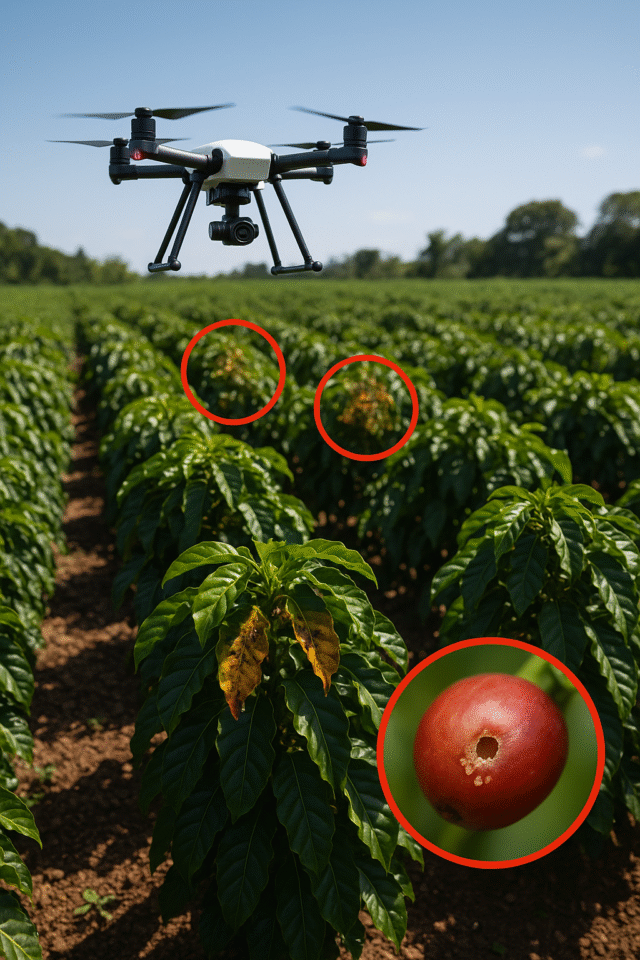A groundbreaking study from Edith Cowan University (ECU) may offer a lifeline to the global coffee industry, which suffered losses exceeding $1 billion in 2023 due to the coffee berry borer—a tiny but highly destructive pest that invades and ruins coffee crops.
The research team has developed a novel drone-based software system capable of detecting signs of coffee berry borer infestations by identifying the distinctive debris, or “frass,” left behind by the insect. Unlike previous methods that attempt to detect the insect directly—an approach made difficult due to its small size and elusive nature—this technique focuses on visible evidence of damage, allowing for faster and more reliable detection.
“Coffee berry borers are incredibly hard to see with the naked eye,” said ECU researcher Dr. David Cook. “Instead of looking for the insect itself, we look for what it leaves behind—similar to how sawdust collects around a drilled hole. The debris from the borer is far easier to spot.”
The system, based on an advanced image-processing algorithm known as L-systems, mimics aspects of human vision by analyzing color, shape, and structure to detect irregularities in crops. Drones equipped with the software can fly over coffee plantations and quickly flag areas at risk of infestation.
The coffee berry borer poses a serious threat to coffee farmers worldwide, particularly in major coffee-producing regions such as South America, Indonesia, and parts of Africa. According to ECU Senior Lecturer Dr. Leisa Armstrong, the new technology could have a significant economic impact.
“Coffee is a high-value crop. If this software allows farmers to identify and treat infestations early, they can avoid losing a large portion of their harvest,” she explained. “That’s not just good news for producers—it could also help stabilize global coffee prices by preventing supply shortages.”
The system was developed by Master’s student Chris Napier, who designed the anomaly-detection tool using colored lattice squares to measure the size, shape, and number of coffee berries. This detailed visual analysis allows for accurate identification of affected areas without invasive procedures.
Beyond coffee, the technology shows potential for use in other crops with similar structures. According to Napier, the algorithm could be adapted to monitor bunch-based crops like grapes, offering a broader agricultural application.
“As drone use increases in farming, this kind of adaptable detection system can help farmers rapidly respond to different types of pathogen outbreaks—not just in coffee,” Napier said.
The findings were published in the BIO Web of Conferences under the title “Coffee Berry Pathogen Anomaly Detection Using Colour and Shape Separation via L-systems.” The research was authored by Chris C. Napier, Dr. David M. Cook, and Dr. Leisa J. Armstrong.
